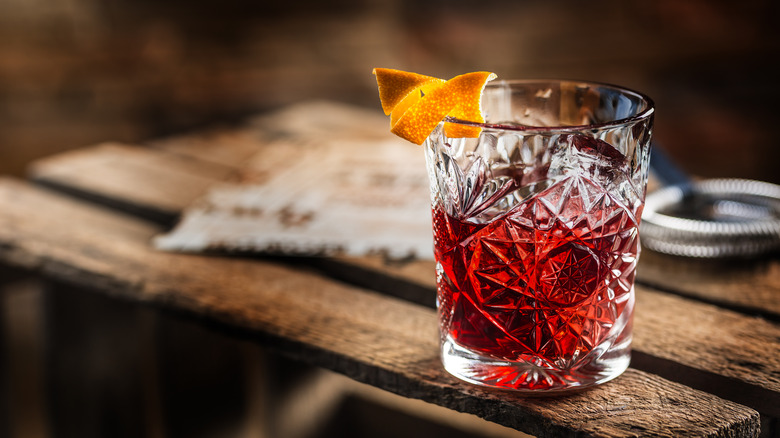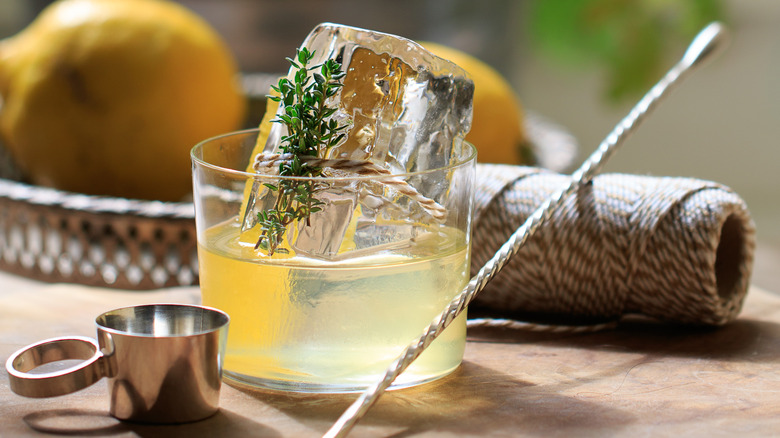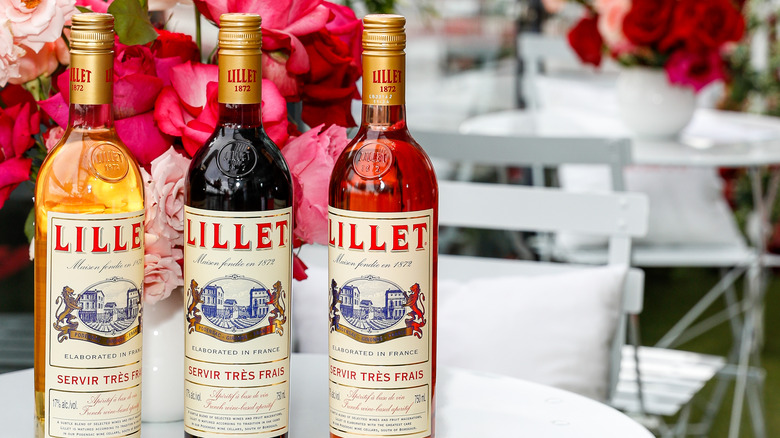What Makes A White Negroni Unique?
If you've been on any social media platform in the past year or near a bar in the past 20, you have probably heard of a Negroni, sbagliato, or otherwise. It's a concoction that began popping up on menus and recipe books in the mid-20th century and has since become one of the essential cocktails in a bartender's arsenal. Made with red Italian amaro liqueur, the Negroni was inspired by the Americano (via Difford's Guide), swapping gin for seltzer water, which created a distinct, sophisticated, herbaceous apéritif. The drink has a striking color and provocative flavor and is elegantly simple. The spirit-forward recipe gives the Negroni a sense of prestige.
Of course, there're countless variations of the Negroni; it's a recipe that invites creative substitutions and reinterpretations to spruce up the classic version. If the goal of the cocktail is to embellish its base spirit (in this case, gin), why not explore every possible flavor combination of amaro and liqueurs? That is what Wayne Collins was doing in 2001 when he and a colleague, Nick Blacknell, were craving Negronis while visiting Bordeaux for a spirits expo. They experimented with various lesser-known local apéritifs in place of Campari and vermouth, and the result was the creation of the White Negroni (via Punch Drink). Now, American consumers are finding a reinvigorated affinity for apéritifs, effectively paving the way for a new era in mixology with eclectic herbal liqueurs, like those in the White Negroni, leading the charge (via Thrillist).
The Suze is loose
The unique aspect of the White Negroni has got to be the supporting liqueurs, Suze and Lillet Blanc, with their distinctive aromas and flavors that dance with the botanicals of a dry gin. Suze is one of those liqueurs that looks familiar, like you saw it in an antique bottle shop or your grandparent's bar cart, but you have no idea what the juice inside tastes like. Luckily, Difford's Guide tells us this neutral alcohol is flavored with macerated gentian root, then double distilled with a blend of herbs and botanicals to curate a sweet, herbal, and slightly bitter flavor. The gentian root that gives Suze its distinguishing bitter flavor is also the main ingredient in angostura bitters, making it a logical alternative for Campari, which lends the bitter taste to a traditional Negroni.
Ironically, the White Negroni is one of the primary reasons why Suze is imported to the U.S. today. As Wayne Collins told Punch Drink, to get the cocktail to catch on, he introduced the recipe to a bar director in New York, who then proceeded to smuggle bottles of the liqueur back to the states to keep the White Negroni on their bar menu. Over time, as more Americans were introduced to Suze, demand increased, prompting Pernod Ricard to finally start importing the neon yellow liqueur in 2012.
Lillet Blanc explained
The sweetness that ties the cocktail together is brought to us courtesy of Lillet Blanc. This French apéritif is a blend of mostly Sémillon and Sauvignon Blanc wine, fortified with fruit liqueur made from a variety of oranges soaked in brandy (according to Difford's Guide). The resulting flavor is slightly sweet with acidic notes and a dry finish.
With both classified as aromatized wines, it's natural for Lillet Blanc to be the sweet vermouth alternative, where its role is to bridge the intense characteristics of the gin and Suze with a touch of sweetness and twang of body. In this case, it seems that Lillet Blanc performs the job better than its rosé or rouge counterparts partially because of the clarity and aesthetic it imparts in the cocktail but also because the white wines used lend themselves to pair better with herbal, vegetal, and botanical flavors than a red wine-base would (via Food and Wine).
The White Negroni is a beautiful blend of the cocktail industry's past and future. Its format harkens back to the traditional three-ingredient cocktail, but its ingredients represent an ever-expanding creative industry. As we continue to see apéritifs trend upward amongst bargoers and liquor enthusiasts, we should be excited to see further evolution of traditional and beloved cocktails.


